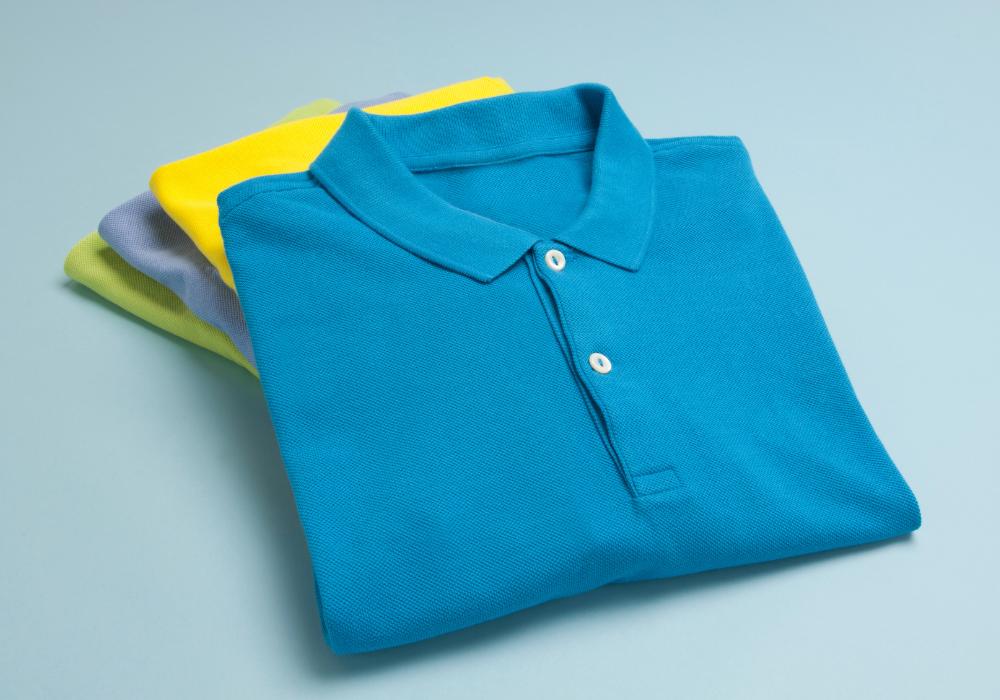Polo shirts have quietly become one of the most versatile pieces in modern wardrobes. You’ll find them styled with trousers at brunch, layered under blazers in officewear edits, or paired with biker shorts on fashion-forward Instagram reels. But where did this timeless piece of fashion really begin?
Interestingly, it started not on the runway—but on dusty polo fields and tennis courts. Here’s how the classic polo shirt evolved from sportswear to a beauty-conscious fashion staple.
What Exactly Is a Polo Shirt?
A polo shirt is more than just a collared tee. It’s typically made of breathable knitted fabric like cotton pique, featuring a buttoned placket and short sleeves. This structure offers a smart-casual appeal that balances style with comfort—an ideal fit for fashion lovers who prioritize function without sacrificing polish.
Today, you’ll also find polos made in silk blends, recycled polyester, and even jersey knits. These updates reflect fashion’s shift toward materials that support skincare needs—like reducing friction and allowing skin to breathe, especially for those prone to sensitivity or acne.
Polo: The Sport Behind the Shirt

The first version of the polo shirt came from the sport of polo, which was played in the 19th century by British officers stationed in India. Players needed a garment that allowed ease of movement and could endure high temperatures. Long-sleeved, thick cotton shirts weren’t ideal—especially since collars would flap while riding.
To solve this, players began buttoning down their collars, inventing the button-down style. This marked a shift from rigid uniformity to functional elegance, and the changes soon included shorter sleeves and lighter, more breathable fabrics.
Tennis and the Lacoste Reinvention
While polo gave the shirt its name, tennis revolutionized its look. In the 1920s, French tennis star René Lacoste rejected the sport’s stiff attire (which included starched shirts and ties) and designed a soft, short-sleeved shirt made of cotton pique.
His version was breathable, had a structured collar, and offered unrestricted motion. The shirt quickly gained traction among athletes, and Lacoste’s brand—marked with the famous crocodile logo—helped push the polo shirt into global fashion relevance.
Beauty Tip: Cotton pique remains a go-to for those with sensitive or acne-prone skin because it’s naturally breathable and doesn’t trap heat—ideal for reducing sweat-induced breakouts.
From Sportswear to Street Style
By the mid-1900s, the polo shirt had jumped from locker rooms to lifestyle. It was adopted by prep schools, golf clubs, and even designers like Ralph Lauren, who elevated its image by pairing it with chinos and boat shoes.
Polo shirts became a fashion staple during the ‘80s and ‘90s preppy movement—and again during the rise of minimalist fashion in the 2010s. Today, they’re essential for capsule wardrobes because of their easy-to-style structure and flattering fit.
The Polo Shirt in Women’s Fashion
While originally tailored for men, the polo shirt became a power piece in women’s wardrobes, too. Designers began experimenting with cropped hems, pastel palettes, and fitted silhouettes. Today, you’ll find polos styled with high-waist trousers, layered under slip dresses, or worn oversized with sleek ponytails and bronzed makeup.
For skincare enthusiasts, this structure offers more than aesthetics. Polo shirts help protect your decolletage and shoulders from direct sun exposure—great when you’ve just applied active serums or undergone a facial.
Skincare Insight: If you use vitamin C or retinoids during the day, a polo’s collar offers subtle added sun protection when paired with SPF.
How to Style a Polo Shirt for Beauty-First Fashion
For the jusebeauty.co.uk audience, fashion isn’t just about looking good—it’s about feeling good in your skin. Here’s how you can wear polo shirts while supporting your beauty routine:
- After facials or peels: Opt for loose, breathable polos to avoid irritation.
- With a sleek bun + dewy base: This combo puts your skincare glow front and center.
- As a sun-smart layer: Wear them during travel days or beach walks to lightly shield your chest and shoulders.
In our Wardrobe Essentials guide, we show how the classic white polo is the MVP of warm-weather layering.
The Global Rise of Polo Shirts

In today’s fashion climate, polos continue to evolve. From fitted ribbed knits to oversized styles with streetwear prints, there’s a polo for every mood. Designers like Stella McCartney and brands like Psycho Bunny offer gender-neutral polo shirt collections with bold graphics and premium detailing, highlighting how this classic piece continues to evolve in luxury and streetwear markets.
Eco-conscious versions made from bamboo fibers and recycled polyester also cater to the growing demand for sustainable fashion that supports skin and planet.
According to industry data, the global polo shirt market is expected to grow by 5.1% annually, thanks to its cross-seasonal appeal and adoption across cultures.
Disclosure: This article may contain affiliate links. If you click and purchase, we may earn a small commission at no extra cost to you.
Personal Note: Why I Keep Reaching for My Polo
On busy days when I don’t want to think too much about what to wear—but still want to look put together—I always grab a slim-fit polo. I’ll swipe on my favorite tinted sunscreen, add a slick bun, gold hoops, and voilà: a no-fuss outfit that feels polished but kind to my skin.
Conclusion: A Timeless Favorite for the Modern Beauty-Focused Wardrobe
Polo shirts have transcended their athletic roots to become staples in every kind of wardrobe—from minimalist to glam. Their balance of function, breathability, and timeless style makes them a perfect companion for beauty lovers who juggle skincare, seasonal style, and comfort.
So, whether you’re recovering from a peel, heading to a last-minute brunch, or curating your next travel wardrobe, a well-cut polo shirt deserves a permanent spot in your closet.

